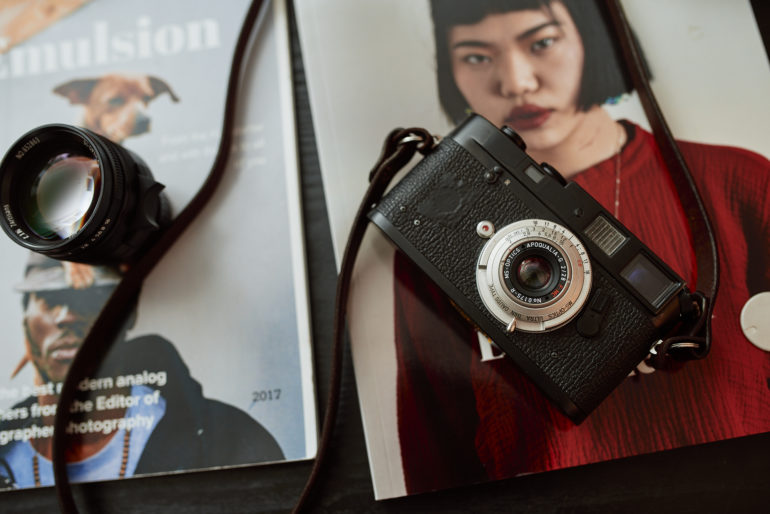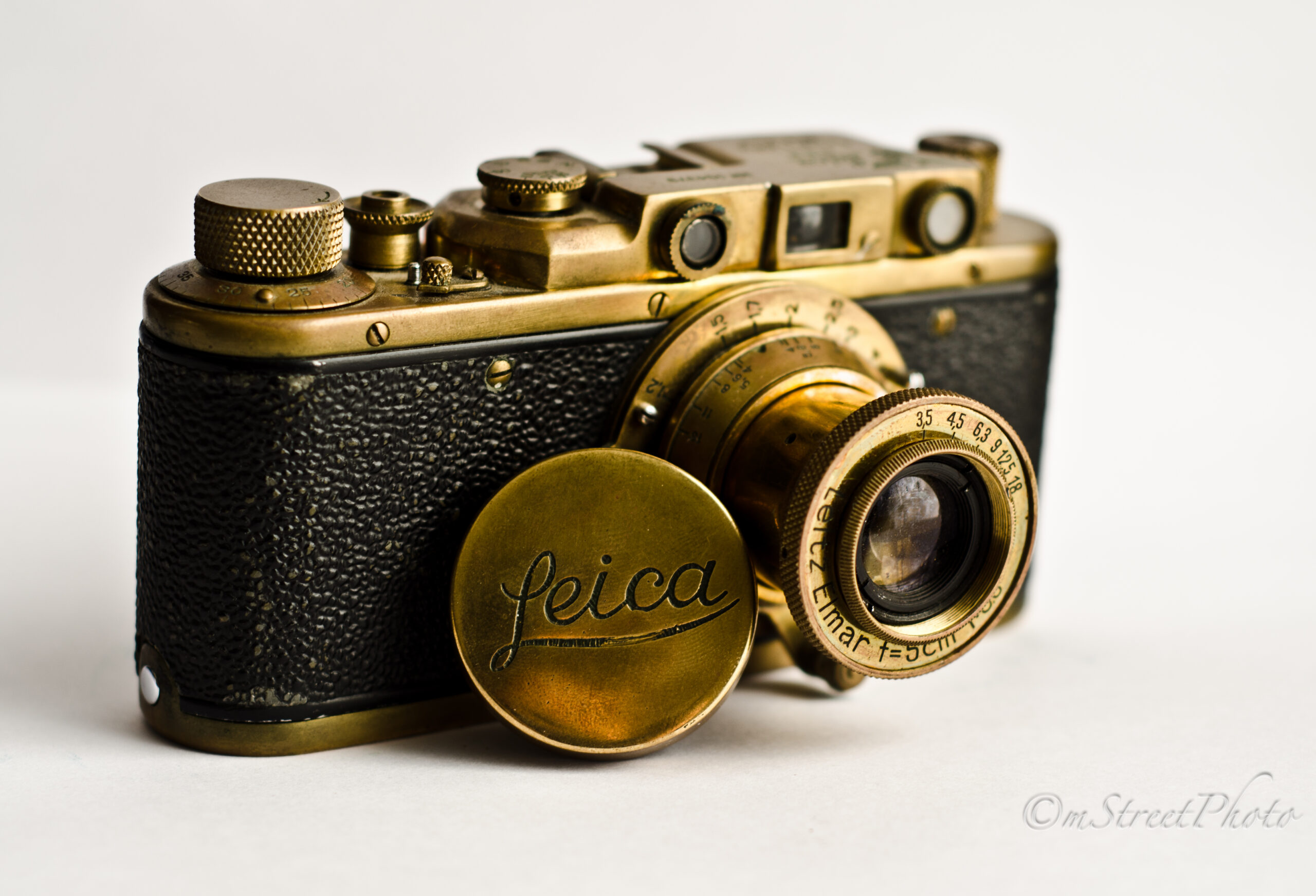The name Leica is synonymous with legendary quality and history. It’s one of the brands I often pine for and have nearly stepped out to purchase on several occasions. If my granddad had owned one of their classic film rangefinders, I probably would have added to that collection of his manifold in the last decade or so. And despite still counting pennies to purchase one, I frequently browse eBay on the off chance that someone has an affordable model up for bidding. As acquainted as I am with its penchant for perfection and impeccable image results, one story about its history was unbeknown to me until recently. A touching tale that trails all the way back to the owner of Leica in the 1930s – Ernst Leitz II. The story of the Leica Freedom Train.
Lead image by John Vance. Used with permissions.
A Born Leader
When we think of photos that defined history, we often think of the photographers that took them. Our thoughts might go to the cameras that helped take those iconic images. But we rarely ever think of the people behind the making of the brand and the roles they may have played in shaping the brand into what they are. One such person who played a significant, unnoticed role was the entrepreneur Ernst Leitz II, the second owner of Leica Camera in Germany. Incidentally, the name was coined from Lei for Leitz and ca for camera. Ernst joined the company as a partner in 1906, when it was owned by his father at the time. On his father’s passing in 1920, he became the primary owner. In 1923, Oscar Barnack created the first few prototypes for the Leica 1 camera with his backing. It’s fair to say that he was responsible for playing a pivotal role in steering the company to its early success. However, he wasn’t just an astute businessman, as the story behind the Leica Freedom Train will tell you.
Germany Changed For The Worse In 1933
As the Nazi regime rose to power in Germany, Ernst Leitz II saw the writing on the wall. He knew that the persecution of Jews would only worsen and that many of his Jewish employees and friends were in grave danger.

Soon after Adolf Hitler became Chancellor of Germany in 1933, German Jews were deprived of their fundamental human rights. Many lost freedom of movement in society and were banned from working in various professions. We won’t get into the horrific details of what they had to endure, but it’s fair to say that life under Hitler became a living hell for them. As someone with many Jews working in his company, Ernst began receiving requests for help. Many of his employees found themselves in grave danger. One could argue that what was happening in Germany back then was entirely out of his control. As a caring employer, though, Ernst felt the need to do something to not only make their lives easier but also to ensure they had a safe future ahead. It wasn’t just the employees who were affected, of course.
Various Jewish associates reached out to Ernst for a lifeline. The only way out for them was to find safe passage out of the country. A seemingly impossible task given the military might the then Chancellor ruthlessly displayed. A clever plan had to be devised that would not only safeguard the Jews but also not raise suspicion.
A Plan With Hope: The Leica Freedom Train
The Leica Freedom Train, as it was later called by historians, was a secret plan that Ernst had devised. This title was meant to be the opposite of the “death trains” that transported millions of Jews to death at concentration camps. A man of conscience, Ernst was committed to doing everything he could to save the lives of many and used his influence and connections to help Jews escape Germany — and he devised a plan.
The initial plan was to somehow help them find work in other countries and provide them financial assistance to help them settle. But as the Nazis began to sniff around, Ernst realized that he had to devise a more substantial plan. And that’s when he realized he could use the resources of Leica Camera as the ideal cover for this.
Shifting “Employees” Overseas
Ernst used his company’s global network to “assign” Jewish employees, associates, family members, and friends to Leitz offices worldwide. Jews were relocated to the UK, France, Britain, Hong Kong, and the USA too. The intensity of the Leica Freedom Train stepped up after the Kristallnacht of November 1938. In the aftermath of this violent pogrom, Leitz stepped up his efforts to help Jews escape persecution. Soon after, many Jews were sent to New York on ocean liners. Far from home as they were, they were also far from the reach of the Third Reich and able to start a new life for themselves. The “employees” who sought Ernst’s help settled in various countries, receiving financial support until they could find work. Ernst instructed his associates in these countries to help the resettled Jews find jobs in the photography industry wherever they lived. Many went on to have careers as photographers, camera repair technicians, and salespersons.
Risking Everything
The Freedom Train went on until 1939 when Germany effectively closed off its borders after the invasion of Poland. The Nazis did have some suspicions about Ernst’s activities, but such was his planning that they weren’t quite able to pin anything concretely on him. Unable to help more Jews escape Germany at this point in time, Ernst Leitz II began to help those who remained in as many secret ways as he could. He would purchase property from Jewish people well above the market value to assist them financially. Ernst and his daughter Elsie Kuehn-Leitz would also try and help Jews escape into Switzerland. Elsie was even thrown into prison for this and served time for three months before being released after Ernst’s intervention.
A Legacy of Heroism
Ernst Leitz II’s actions during this dark period of history demonstrate the power of one person to make a difference in the lives of many. His compassion and bravery in the face of adversity are a testament to the best of humanity. His selfless assistance to many Jews serves as a reminder of the importance of standing up for what is right, no matter the cost.
No one may ever really know how many Jews were saved by the actions of Ernst Leitz II and his family. Leitz never really wanted any credit for his actions, and only after the death of the last member of his family did the story of the Leica Freedom Train come to public knowledge. What’s even more impressive in this all is that Ernst wasn’t a Jew himself. He was a Protestant Christian who was protected against any of the laws implemented against the Jews in Germany. In a world where people tend to categorize themselves and those they favor into religions and sects, Ernst Leitz II’s actions are a good reminder that compassion should see no divide. Even in the darkest of times, he was willing to stand up for what was right and risk everything to help others.


